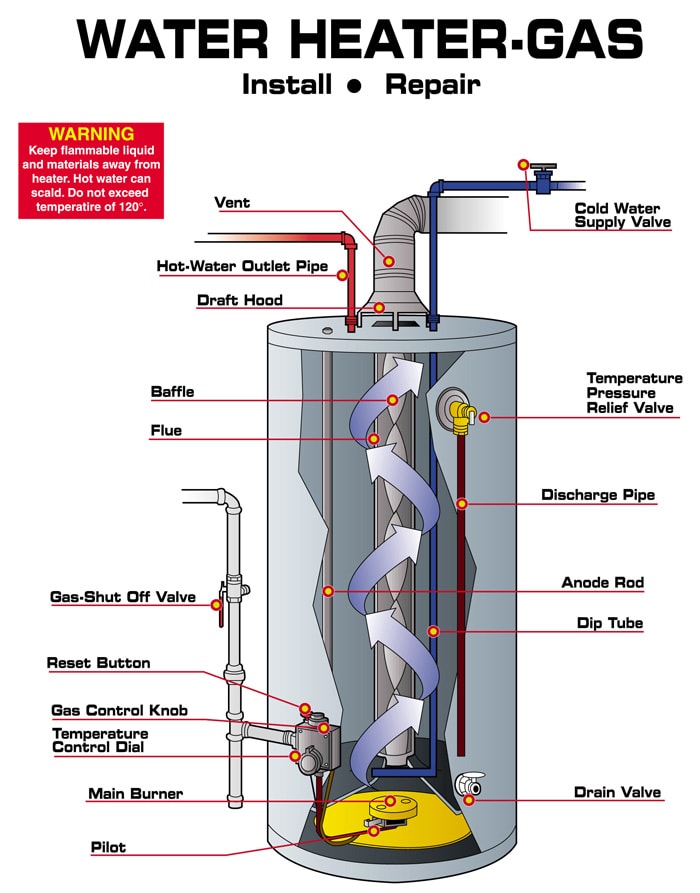Experienced water heater installation professionals serving Brea homes
DIY Hot Water Heater Setup: Important Steps for Success
When thinking about a DIY water heating system installation, it is crucial to come close to the task with a systematic state of mind, as the procedure includes numerous crucial actions that can considerably affect both safety and effectiveness. Picking the ideal water heating unit for your particular requirements is simply the start; preparing the setup location and understanding the necessary devices and products are similarly essential.
Picking the Right Hot Water Heater
When selecting a water heating system, it is important to think about a number of key aspects to ensure ideal performance and performance - water heater installation Brea. First of all, assess the kind of water heating system that finest fits your requirements. Choices consist of tankless, storage space tank, and warm pump hot water heater, each offering distinctive advantages in terms of energy performance and room demands
A bigger family members might require an unit with a greater gallon capacity or a tankless system that can offer continuous hot water. Each energy type has effects for installment expenses and lasting energy expenses.
Energy effectiveness is one more vital variable. By very carefully assessing these aspects, you can pick a water heater that lines up with your family's details needs, ensuring convenience and effectiveness for years to come.
Devices and Products Needed
Successfully installing a hot water heater calls for not just the ideal option of unit but also the ideal tools and products. Before starting your DIY task, guarantee you have an extensive checklist of things to promote a smooth installation process.
Necessary devices consist of a pipeline wrench, adjustable pliers, and a screwdriver set (both flathead and Phillips), which will help you manage various installations and connections. Furthermore, a drill with proper bits is needed for placing braces or making any kind of required openings. For security, a voltage tester is important, specifically when handling electrical hot water heater.
You will certainly also need a flexible water supply line, which can be either braided stainless steel or PVC, depending on your choices and local codes. By collecting these products and tools in advance, you established the phase for an effective water heater setup.
Planning For Setup
Prior to beginning the installation of your hot water heater, it is vital to evaluate the installation site to guarantee it fulfills all needed needs. Start by confirming that the location is well-ventilated, particularly for gas water heating systems, to avoid the accumulation of harmful gases. Inspect for the accessibility of required links, consisting of water supply lines and electric outlets, guaranteeing they are in excellent condition and effectively located.

Furthermore, check the existing pipes and electrical systems to identify if upgrades or repair work are needed prior to installment. This proactive approach not just makes sure conformity with neighborhood building regulations yet additionally boosts the long life and performance of the hot water heater. Collect all needed his response licenses, if required, to stay clear of lawful difficulties later on. Proper preparation sets the stage for a smooth installation procedure and assists avoid unforeseen issues.
Step-by-Step Installation Refine
With the preparation complete and all necessary evaluations conducted, the following stage involves the detailed setup of your water heating system. For tank-type water heating units, connect the cool water supply line to the inlet, usually noted in blue, and the hot water line to the electrical outlet, typically designated in red.
Following, secure the temperature and pressure relief shutoff, which is vital for safety and security. Affix the discharge pipeline to this shutoff, routing it in the direction of the floor or an ideal drainage location. For electric designs, attach the power supply by stripping the cables and safeguarding them to the heating unit's terminals according to the manufacturer's directions.
If you are mounting a gas water heating system, guarantee the gas line is attached correctly and look for leakages utilizing a soap service. Nevertheless connections are made, fill up the container with water before transforming on the power or gas supply. Ultimately, enable the water heating system to reach the preferred temperature level and look for any informative post kind of leakages around all connections.
Ensuring Safety And Security and Performance
Routinely making certain safety and performance during the setup and operation of your hot water heater is critical for optimal performance and durability. Begin by picking an appropriate area that abides by local building regulations and gives sufficient air flow. Ensure that the area is devoid of flammable materials and has adequate room for upkeep and inspections.

After installment, conduct routine look at the system to identify leaks, corrosion, or unusual noises. Establish the thermostat to a safe temperature, usually around 120 ° F, to prevent hot and boost power effectiveness. Protect pipelines to decrease warm loss, which adds to lower power bills.
Final Thought
In conclusion, successful Do it yourself water heating unit installation pivots on careful preparation and execution. Choosing the suitable water heating system, preparing the installation location, and following a systematic installment process are important actions.
When thinking about a Do it yourself water heater installment, it is important to come close to the task with a systematic way of thinking, as the process involves numerous crucial actions that can significantly affect both safety and security and performance.Before starting the installment of your water heater, it is vital to assess the installation site to ensure it fulfills all visit our website necessary demands. For tank-type water heating units, attach the cold water supply line to the inlet, normally marked in blue, and the warm water line to the outlet, typically assigned in red.Consistently guaranteeing safety and performance throughout the installation and operation of your water heating unit is vital for optimum performance and durability. Picking the ideal water heating system, preparing the installation location, and complying with a systematic installation process are important steps.